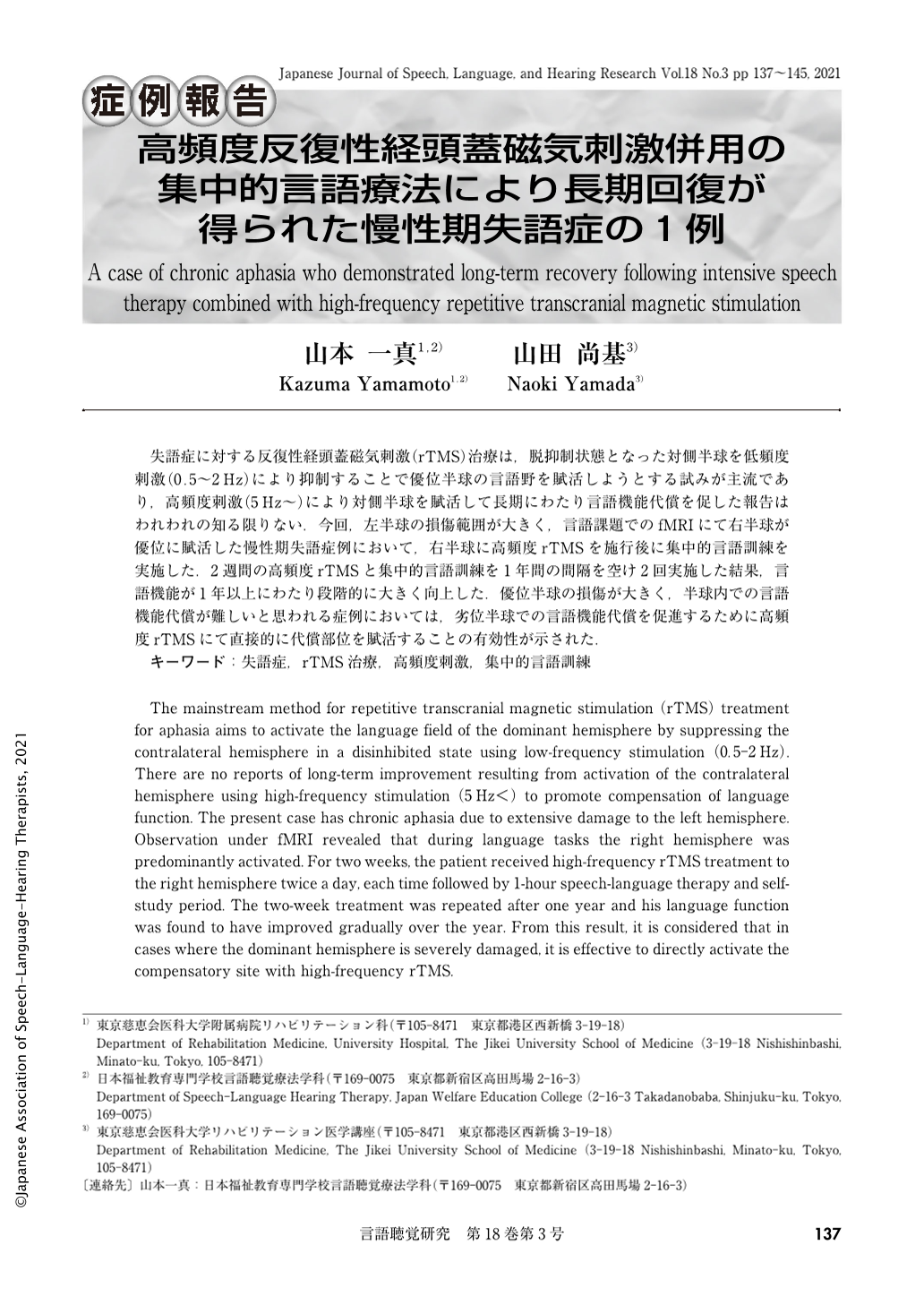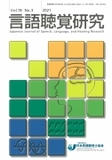Japanese
English
- 有料閲覧
- Abstract 文献概要
- 1ページ目 Look Inside
- 参考文献 Reference
失語症に対する反復性経頭蓋磁気刺激(rTMS)治療は,脱抑制状態となった対側半球を低頻度刺激(0.5〜2Hz)により抑制することで優位半球の言語野を賦活しようとする試みが主流であり,高頻度刺激(5Hz〜)により対側半球を賦活して長期にわたり言語機能代償を促した報告はわれわれの知る限りない.今回,左半球の損傷範囲が大きく,言語課題でのfMRIにて右半球が優位に賦活した慢性期失語症例において,右半球に高頻度rTMSを施行後に集中的言語訓練を実施した.2週間の高頻度rTMSと集中的言語訓練を1年間の間隔を空け2回実施した結果,言語機能が1年以上にわたり段階的に大きく向上した.優位半球の損傷が大きく,半球内での言語機能代償が難しいと思われる症例においては,劣位半球での言語機能代償を促進するために高頻度rTMSにて直接的に代償部位を賦活することの有効性が示された.
The mainstream method for repetitive transcranial magnetic stimulation (rTMS) treatment for aphasia aims to activate the language field of the dominant hemisphere by suppressing the contralateral hemisphere in a disinhibited state using low-frequency stimulation (0.5-2Hz). There are no reports of long-term improvement resulting from activation of the contralateral hemisphere using high-frequency stimulation (5Hz<) to promote compensation of language function. The present case has chronic aphasia due to extensive damage to the left hemisphere. Observation under fMRI revealed that during language tasks the right hemisphere was predominantly activated. For two weeks, the patient received high-frequency rTMS treatment to the right hemisphere twice a day, each time followed by 1-hour speech-language therapy and self-study period. The two-week treatment was repeated after one year and his language function was found to have improved gradually over the year. From this result, it is considered that in cases where the dominant hemisphere is severely damaged, it is effective to directly activate the compensatory site with high-frequency rTMS.

Copyright © 2021, Japanese Association of Speech-Language-Hearing Therapists. All rights reserved.


